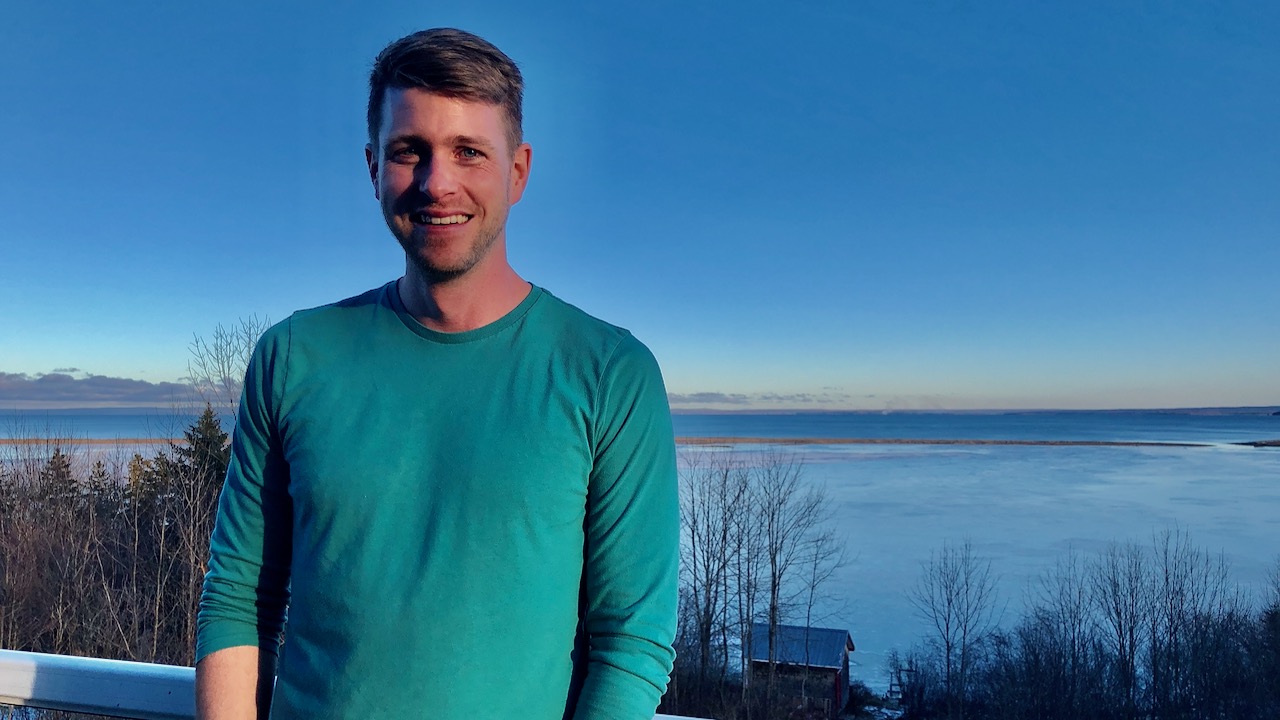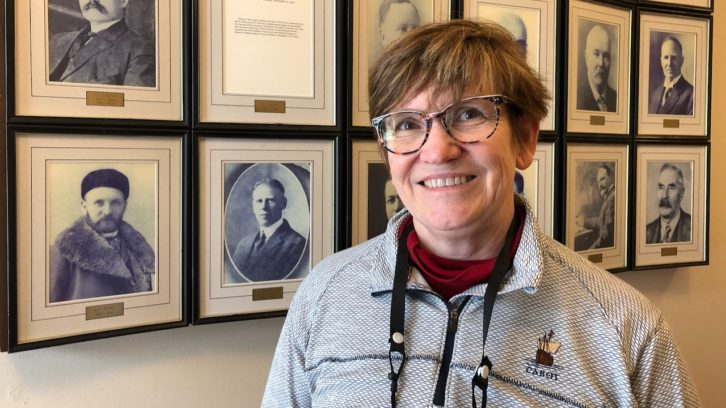St. FX professor uses math to try and reduce town, school tensions
Goal was to help the community understand the actual risk around holding in-person classes

caption
St. FX math professor Ryan LukemanOne St. Francis Xavier University professor saw the community’s increasing anxiety around the return of thousands of students to campus this fall, and turned to math.
Ryan Lukeman is an Antigonish native and professor of math and statistics at St. FX. The university announced in mid-June that it would be returning to mostly in-person classes in the fall.
“Some of the people I was talking to,” Lukeman said, “were expressing anxiety and stress around having 4,000 students roll back into town, and what the ramifications might be for bringing COVID.”
Antigonish is a town of just over 4,000 that doubles in size when the university is in session. It has a small regional hospital and several nursing homes. It’s in the eastern zone for COVID-19 reporting, which saw only two cases between June and August. Related stories
There was very little concrete information about how many cases the students might reasonably be expected to bring to town, Lukeman said, and that lack of information added to the fear.
He wanted to use his expertise to do something constructive. Lukeman had a hunch that the actual numbers would be very low, as about 65 per cent of the student population was from within the Atlantic Bubble.
He decided to calculate the actual risk of students importing COVID-19 to his community.
Mathematical modelling demonstrates low level of risk
He and Rebecca Martino, a student he was working with over the summer, got to work. Using registration information about where students were coming from, the rates of infection in those areas and a relatively simple equation, they came up with a number.
The risk, Lukeman found, was very low. He predicted that less than one case of COVID-19 would arrive on campus with the students, and the school saw none.
The calculations were shared on the university email lists and generated a lot of interest and response. Mostly people were relieved to see a number much lower than they had imagined. This calculation, Lukeman said, was never supposed to exact, but to give a sense of whether they should expect one, 10 or 100 cases. It also did not predict what might happen after COVID-19 arrived on campus, how fast or far it might spread.
Lukeman said one of the reasons he did it was the chance to reach people outside the math world and connect with his community.
“All different areas of science are contributing in their own ways. And, certainly the people who are making the vaccines are doing the real work,” he said. “But [this] was my little contribution.
“It’s way that I can say, Hey, if you’re extremely concerned about this, I’m giving you some reference point to gauge your concern.”
Numbers versus emotions
People in Antigonish were extremely concerned.
Mayor Laurie Boucher said the day the university announced students would be returning, she was flooded with phone calls and Facebook messages. People were upset and scared.
While Boucher said she personally found Lukeman’s modelling was helpful in guiding her own response to the situation, she didn’t feel sharing the numbers with the larger community would necessarily help. When people are really scared, she said, numbers don’t necessarily soothe them.
“So that was that was the hard part,” she said, “trying to balance the actuality versus the perception that is fuelled by fear.”
Boucher was inspired by Dr. Robert Strang’s approach throughout the pandemic, and his urging to remember to be kind to one another during such a stressful experience.
“I’ve really felt our job was to recognize the fears and validate the fear,” she said.
“You know, their concerns are real.”
Even if the number of cases coming in was very low, she said, people found it hard to believe students would follow quarantine rules and social distancing regulations.
They were looking at past student behaviour, she said, the large parties and home-coming gatherings. There was a lot of concern about the hospital’s capacity to cope.

caption
Laurie Boucher is the mayor of AntigonishShe emphasized that the town did not have a say in the university’s decision, but she felt it was important to work with the university to ensure the best systems would be in place for managing the return.
Boucher saw it as her job to bring the town’s concerns and fears to the university. She said she was pleased when they took these concerns on board and made efforts to improve communications.
“I think once people saw their transparency,” Boucher said, “the temperature in the community came down a little bit.”
The university held online town hall meetings in late June that anyone from the community could attend to ask questions and voice concerns. The town, county and university had weekly meetings, and the university has been providing weekly updates on the local radio station ever since.
The school sent out flyers to every mailbox in the community before the fall return, and again after Christmas, explaining their plans to reduce the risk and keep everyone safe.
The vast majority of students took the COVID-19 measures very seriously in the fall, Boucher said.
“I’m really happy with how the students did.”
Risk increased for the student’s winter return, but anxiety has subsided
Lukeman repeated the calculation for the winter term. The level of risk increased because COVID-19 levels were rising across the country and had become more prevalent in younger people. But even with this increase, his prediction was that there would still be less than five cases.
So far, with almost all students finished quarantine, St. FX has seen only three cases.
As a species, Lukeman said humans are not very good at predicting risk.
“All through our lives, we’re constantly encountering risk. And the risk is often very low. And we deal with that,” he said.
If you drove a car today, you carried a risk of crashing your car and dying, he said. But we’ve gotten very good at dealing with low level, mundane risk.
“But we are not very good at dealing with novel risk,” Lukeman said, “even if it is a very, very unlikely thing.”
The student’s return in the fall, he said, was a great example of a novel risk. But the second time around, it’s less novel.
That certainly bears out in the town’s reaction to the risk in the fall versus the risk in the winter. Even though the risk had increased by a factor of 10 in the winter term, there was much less fear surrounding the return after Christmas break.
Boucher said she received only about one quarter as many phone calls in December and early January as she did before the first semester.
“I think we’re just becoming used to it.” Lukeman said.
“We’ve got the vaccine within sight, and all of these things are allowing us to come to grips with the risk. It’s becoming less of a fearful thing for us. And we see a way out of this.”
About the author
Rose Murphy
Rose Murphy is a multimedia journalist in Nova Scotia. She is interested in stories about unusual characters, small business, resilient communities,...
